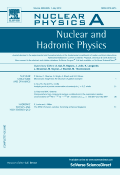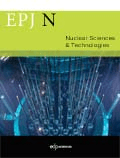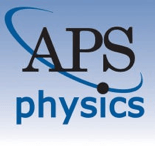
ATOMIC DATA AND NUCLEAR DATA TABLES
Scope & Guideline
Bridging theory and application in atomic and nuclear research.
Introduction
Aims and Scopes
- Atomic Structure Calculations:
The journal publishes papers that explore the theoretical and computational methods for determining atomic structure parameters, including energy levels, transition rates, and cross sections for various atomic ions. - Nuclear Data Compilation and Analysis:
It includes systematic compilations of nuclear data, such as mass tables, hyperfine structure constants, and fission yields, crucial for both experimental and theoretical nuclear physics. - Cross Section Measurements:
The journal emphasizes the measurement and theoretical calculation of cross sections for various processes, including electron scattering, photoionization, and ionization, providing essential data for understanding atomic and nuclear interactions. - Relativistic and Quantum Mechanical Approaches:
A core aspect of the journal's focus is the application of advanced relativistic and quantum mechanical methods to describe atomic and nuclear phenomena, highlighting contributions from state-of-the-art theoretical frameworks. - Astrophysical and Fusion Applications:
The journal also addresses applications of atomic and nuclear data in astrophysics and nuclear fusion research, linking fundamental atomic properties to practical applications in these fields.
Trending and Emerging
- Advanced Computational Methods:
There is a significant increase in publications utilizing advanced computational techniques, such as multiconfiguration Dirac-Hartree-Fock and relativistic approaches, indicating a trend towards more accurate and detailed atomic structure calculations. - Data for High-Z Elements:
Recent papers show a growing emphasis on high atomic number elements and their unique properties, particularly in the context of nuclear fusion and astrophysical applications, reflecting the increasing relevance of these elements in contemporary research. - Experimental Validation of Theoretical Models:
A trend towards publishing studies that validate theoretical predictions with experimental data is emerging, showcasing the importance of empirical evidence in advancing atomic and nuclear science. - Cross-Disciplinary Applications:
The journal is increasingly addressing the implications of atomic and nuclear data in various fields, including materials science, astrophysics, and medical physics, suggesting a broadening of its audience and application spectrum. - Focus on Fusion Research and Astrophysical Data:
With a rise in interest in nuclear fusion and astrophysical phenomena, there is an uptick in publications related to fusion barriers, reaction rates, and energy levels pertinent to these fields, underscoring their importance in future research.
Declining or Waning
- Traditional Nuclear Reaction Data:
There has been a noticeable reduction in the publication of traditional nuclear reaction data, such as simple (n,p) or (p,γ) reactions, as newer techniques and theories emerge, focusing more on complex interactions and advanced modeling. - Basic Atomic Theory without Experimental Correlation:
Papers focusing solely on theoretical atomic parameters without correlating to experimental data have diminished, suggesting a shift towards more data-driven research that emphasizes empirical validation. - Low-Z Element Studies:
Studies centered around low atomic number elements and their simple atomic transitions are less frequent, potentially indicating a shift towards more complex systems and higher-Z elements that have greater relevance in current research. - Static Models of Atomic Structure:
There is a decline in the use of static models for atomic structure calculations, as dynamic and relativistic models become more prevalent in addressing the complexities of atomic interactions. - Classical Approaches in Nuclear Data:
Classical models in nuclear data analysis are being overshadowed by more sophisticated quantum mechanical approaches, leading to fewer publications that utilize classical frameworks.
Similar Journals

PHYSICS OF ATOMIC NUCLEI
Unraveling the Mysteries of Matter's Building BlocksPHYSICS OF ATOMIC NUCLEI is a distinguished journal dedicated to advancing the understanding of nuclear and particle physics, published by PLEIADES PUBLISHING INC. With its ISSN 1063-7788 and E-ISSN 1562-692X, this journal serves as a vital resource for researchers, professionals, and students in the fields of atomic and molecular physics, as well as high-energy physics. The journal has been actively contributing to the scientific community since its inception in 1996 and continues to publish valuable findings through 2024. Despite its current standing in the Q4 category for both Atomic and Molecular Physics, and Nuclear and High Energy Physics, there is an abundance of potential for growth and impact in these disciplines, as evidenced by its placement in the Scopus rankings. While the journal does not currently offer open access, it remains committed to disseminating quality research that informs and engages the scientific community. Explore PHYSICS OF ATOMIC NUCLEI to stay at the forefront of nuclear physics research and contribute to the dialogue in this critical area of study.

NUCLEAR PHYSICS A
Fostering Breakthroughs in High Energy ResearchNUCLEAR PHYSICS A, published by Elsevier, is a leading international journal dedicated to the fields of Nuclear and High Energy Physics. With an ISSN of 0375-9474 and E-ISSN 1873-1554, the journal has been pivotal in advancing research since its inception in 1967 and is set to continue influencing the discipline through 2025. It holds a commendable Q2 classification in the 2023 category of Nuclear and High Energy Physics, ranking 32nd out of 87 journals in its field according to Scopus, placing it in the 63rd percentile. NUCLEAR PHYSICS A provides valuable insights and disseminates cutting-edge research, aiding researchers, professionals, and students in their academic and practical pursuits. Though it does not currently offer open access, the journal remains a vital resource for those engaged in the exploration of nuclear phenomena and theoretical advancements in high-energy physics.

EPJ Nuclear Sciences & Technologies
Empowering Global Collaboration in Nuclear ResearchEPJ Nuclear Sciences & Technologies is a prominent Open Access journal published by EDP Sciences S A, focusing on the vital fields of Nuclear and High Energy Physics, Nuclear Energy and Engineering, and Energy Engineering and Power Technology. Launched in 2015, this journal provides a platform for researchers, students, and professionals to disseminate cutting-edge research and innovations that address the challenges and opportunities in nuclear sciences, a field of critical importance in today’s energy landscape. With an ISSN of 2491-9292 and an evolving impact reflected in its 2023 Q3 quartile rankings across several relevant categories, EPJ Nuclear Sciences & Technologies is committed to promoting high-quality, peer-reviewed research accessible to a global audience. Its dedicated focus on enhancing knowledge transfer and international collaboration makes it an essential resource for anyone engaged in nuclear sciences and technologies.

Optoelectronics Letters
Connecting Scholars in the Evolving World of OptoelectronicsOptoelectronics Letters, published by Tianjin University of Technology, is an esteemed platform for the dissemination of innovative research within the fields of atomic and molecular physics, optics, condensed matter physics, and electrical engineering. With its inaugural publication in 2007 and a convergence period extending to 2024, this journal aims to foster scholarly communication and collaboration among researchers and professionals. Although currently lacking an impact factor, it serves a vital niche in the rapidly evolving field of optoelectronics, evidenced by its categorization in the fourth quartile for various physics disciplines and the third quartile in electrical and electronic engineering. Given its ranking dynamics in Scopus, it is an emerging choice for authors seeking to convey their findings on electronic, optical, and magnetic materials. Researchers, students, and industry professionals alike can benefit from its open access options, encouraging a broad dissemination of cutting-edge knowledge that is essential in the advancement of technology and materials science.

Quantum Beam Science
Bridging Theory and Application in Quantum ResearchQuantum Beam Science, published by MDPI since 2017, is an esteemed open-access journal that occupies a pivotal role in the fields of atomic and molecular physics as well as nuclear and high-energy physics. Based in Switzerland, this journal embraces a global community of researchers dedicated to advancing our understanding of quantum phenomena through innovative experimental and theoretical approaches. With an impactful presence reflected in its category quartiles—ranking Q3 in both the Atomic and Molecular Physics, and Nuclear and High Energy Physics categories—the journal aims to bridge the gap between foundational research and practical applications of quantum technology. Since adopting an open-access model, Quantum Beam Science has fostered greater accessibility to groundbreaking studies, facilitating knowledge dissemination among researchers and professionals alike. This commitment to open science empowers the next generation of physicists to contribute to a rapidly evolving discipline, ensuring that critical advancements reach a diverse audience. Stay informed on the latest developments in quantum research as the journal covers a wide range of topics, making it an essential resource for students, academics, and professionals in the field.

Atoms
Connecting researchers with groundbreaking atomic discoveries.Atoms is a distinguished open-access journal published by MDPI since 2013, dedicated to the fields of Atomic and Molecular Physics, Condensed Matter Physics, and Nuclear and High Energy Physics. With its E-ISSN of 2218-2004, the journal is based in Switzerland and has rapidly established itself as a noteworthy platform for disseminating innovative research and developments in atomic-scale physics. As reflected in its 2023 Scopus ranking, Atoms holds a respectable position within its field, with quartile rankings in the third tier across all its main categories. The journal's commitment to open access fosters a broader reach and collaboration within the scientific community, making it an essential resource for researchers, professionals, and students alike. The ongoing convergence of trends and research from 2013 to 2024 highlights Atoms' role in advancing knowledge and facilitating dialogue in crucial areas of physics.

PHYSICS OF PARTICLES AND NUCLEI
Advancing Knowledge in High Energy PhysicsPhysics of Particles and Nuclei is an esteemed journal within the field of nuclear and high energy physics, published by Pleiades Publishing Inc. Based in the United States, this journal has been a vital platform for disseminating cutting-edge research since its inception in 1996, with coverage extending until 2024. Indexed under the ISSN 1063-7796 and the E-ISSN 1531-8559, it has established itself as a noteworthy publication, currently categorized in the Q3 quartile according to the 2023 standards for Nuclear and High Energy Physics. With its Scopus ranking placing it at #62 out of 87 in its category, Physics of Particles and Nuclei provides unique insights and discussions that resonate with academics, researchers, and students alike. Although it does not offer open access, the journal continues to serve as a crucial resource for those looking to engage deeply with the latest advancements and theoretical explorations in particle and nuclear physics.

Nuclear Materials and Energy
Bridging Research and Application in Nuclear EnergyNuclear Materials and Energy is a premier open-access journal published by Elsevier, dedicated to the dynamic fields of nuclear science and materials engineering. Since its inception in 2015, the journal has made significant strides in disseminating cutting-edge research, establishing itself as a vital resource for researchers and professionals alike. With a commendable impact factor and ranked in the Q2 category for both Materials Science (miscellaneous) and Nuclear and High Energy Physics, and impressively in Q1 for Nuclear Energy and Engineering in 2023, Nuclear Materials and Energy stands out in the academic community. This journal aims to bridge the gap between fundamental research and practical applications, promoting innovative solutions in the efficient utilization of nuclear materials and energy technologies. Open access since 2015, the journal ensures wide dissemination and accessibility of crucial findings, making it an essential platform for advancing knowledge and fostering collaboration in these pivotal fields.

INTERNATIONAL JOURNAL OF MODERN PHYSICS A
Exploring the cosmos and the building blocks of matter.INTERNATIONAL JOURNAL OF MODERN PHYSICS A, published by WORLD SCIENTIFIC PUBL CO PTE LTD, stands as a pivotal platform in advancing the frontiers of research within the fields of Astronomy and Astrophysics, Atomic and Molecular Physics, and Nuclear and High Energy Physics. Established in 1989, this journal has systematically contributed to the scientific community, with a demonstrated impact as indicated by its Q2 category rankings across these critical disciplines in 2023. Researchers and professionals are encouraged to engage with its rigorous peer-reviewed content, fostering a deeper understanding of modern physics theories and experimental breakthroughs. Although the journal operates under a conventional access model, it remains a vital resource for those seeking to disseminate their findings and stay abreast of cutting-edge developments. With an emphasis on quality and breadth of research, the journal continues to attract submissions from leading physicists and scholars, enhancing its reputation as a key academic resource.

PHYSICAL REVIEW D
Exploring the Depths of Quantum Field TheoryPHYSICAL REVIEW D, published by the American Physical Society, is a premier journal dedicated to the rapid dissemination of significant research findings in the fields of Nuclear and High Energy Physics as well as Physics and Astronomy. With an impressive Impact Factor and a prestigious Q1 ranking in 2023, it stands as one of the leading journals in its domain, with a Scopus ranking of #6 out of 87 in its category, placing it in the 93rd percentile. The journal welcomes rigorous theoretical and experimental studies that advance understandings in particle physics, cosmology, and quantum field theory. Although it does not provide open access, researchers gain a significant platform to reach a global audience and contribute to the ongoing discourse within the scientific community. Published regularly since its convergence starting in 1989, it remains essential for both emerging and established scholars looking to stay at the forefront of high-energy and nuclear physics research.